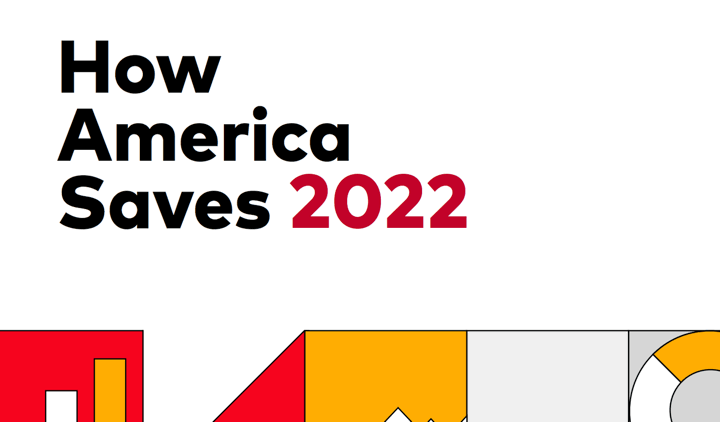
Vanguard recently released the 2022 edition of their annual How America Saves report, a 110-page report targeted at industry insiders which looks at the nearly 5 million 401k, 403b, and other defined-contribution retirement plans. If you wish to geek out on 401k stats, there is a great deal of information in this report. Here are a few highlights based on 2021 data:
Employee contributions. The average/median employee contribution rate amongst participants was 7.3%/6.1% in 2021. Median means that half of people were saving more, while half were saving less. Average is weighted more by absolute dollar savings. (Click to enlarge.)
Employer contributions (company match). The total average/median contributions by year was 11.2%/10.3% (employer and employee combined). This means that the average/median employer/company contribution was about 4%. (Click to enlarge.)
How much does Vanguard think we should be saving? I found this quote noteworthy:
We believe participants need to reach a total saving rate of 12% to 15% or more to meet their retirement goals.
Maxing it out! Overall, 14% of participants saved the maximum annual amount of $19,500 ($26,000 age 50+) for 2021. However, 58% of those with incomes of $150,000+ maxed out their contributions. Here is the full breakdown by income:
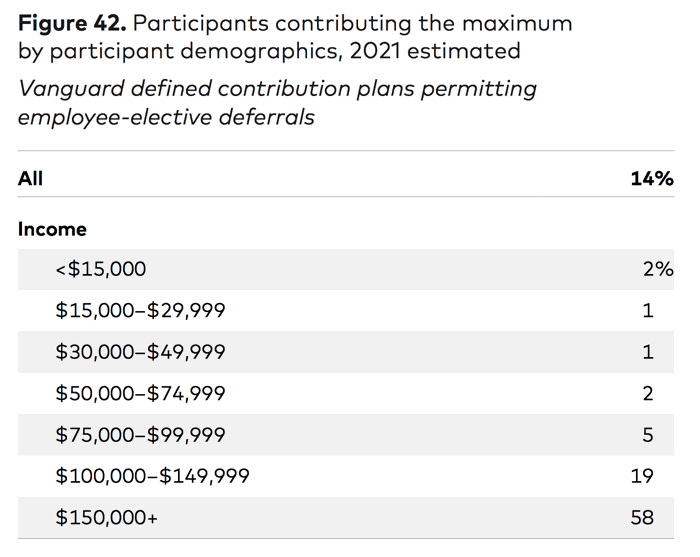
(Not really sure how the folks earning under $15k per year are doing it… maybe these income numbers are after subtracting the contributions?)
How are people investing? Asset allocation. This chart shows the trends in asset allocation as the participants age. The increased use of Target-date funds and other professional management options has changed it so that young people are less likely to hold cash. (Click to enlarge.)
Account balances. The average account balance was $141,542 for 2021; the median balance was $35,345. This disparity means that a small number of plans with very high balances skews this often-quoted average upward. (Click to enlarge.)
I don’t pay much attention to this stat because the average includes workers across different age groups, income levels, job tenures, and so on. If I just switched jobs and rolled over my old 401k into an IRA, technically my balance is zero no matter what.
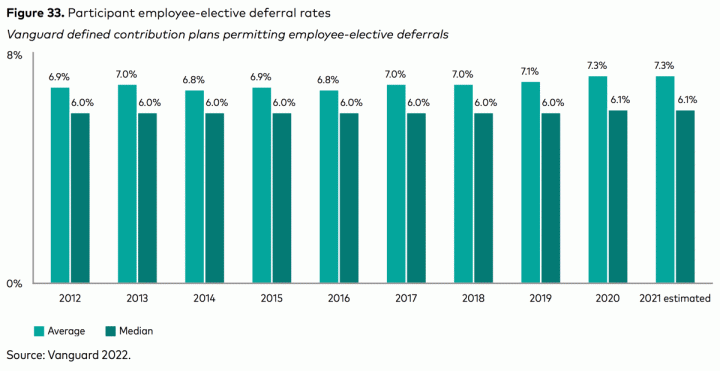
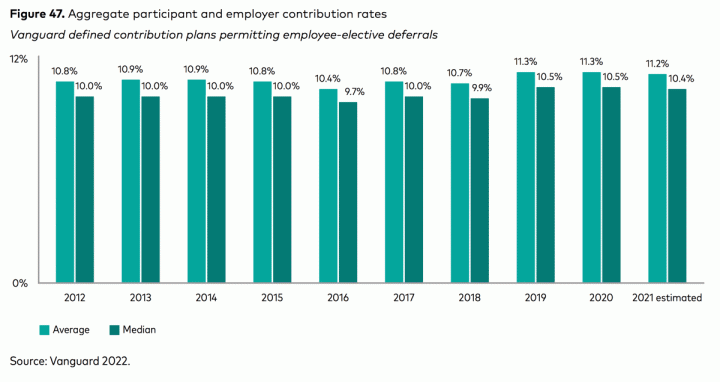
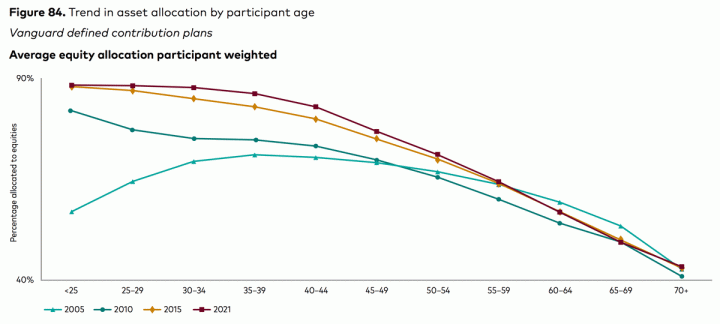
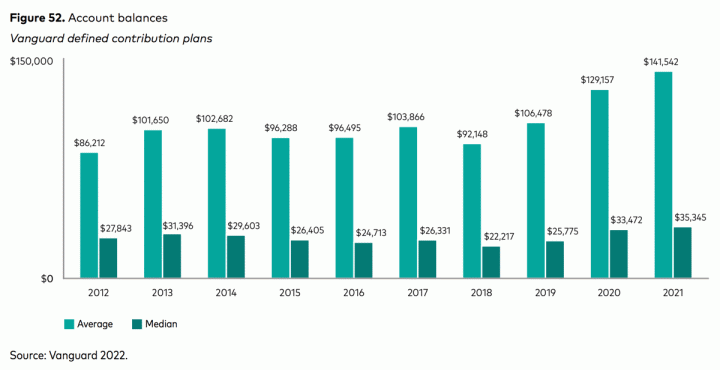
 The Best Credit Card Bonus Offers – 2025
The Best Credit Card Bonus Offers – 2025 Big List of Free Stocks from Brokerage Apps
Big List of Free Stocks from Brokerage Apps Best Interest Rates on Cash - 2025
Best Interest Rates on Cash - 2025 Free Credit Scores x 3 + Free Credit Monitoring
Free Credit Scores x 3 + Free Credit Monitoring Best No Fee 0% APR Balance Transfer Offers
Best No Fee 0% APR Balance Transfer Offers Little-Known Cellular Data Plans That Can Save Big Money
Little-Known Cellular Data Plans That Can Save Big Money How To Haggle Your Cable or Direct TV Bill
How To Haggle Your Cable or Direct TV Bill Big List of Free Consumer Data Reports (Credit, Rent, Work)
Big List of Free Consumer Data Reports (Credit, Rent, Work)
Jon, one interesting chart from the vanguard report is on page 83 (figure 96 c). This dispersion chart seems to show Managed Account Participants having an noticeable out-performance of the target date fund participants with data points above the the Target Date line on figure 96 a. Are the Managed Accounts managed by Vanguard, and, if so, what different strategy is being employed by the Managed Accounts, I wonder.
Thanks Jonathan. I may only be dreaming, but a really neat stat to have (if it’s even possible?) would be average total of workplace and IRA accounts for investors. Would eliminate the issues with switched jobs rollovers you mentioned, plus add a more complete picture of retirement savings. Sure, people can save for retirement in a taxable account too, but if most people are following the popular recommendation of filling available tax-advantaged space first, then those folks would mostly register as maxing out their retirement accounts anyways.